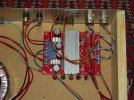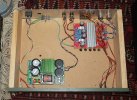I have no interest in flavour of the month, short operational lifetime products. There's so much more enjoyment to be had from products that perform faultlessly for decades, like a loyal friend. And when they do get old and need a little attention, I fully restore them back to their original (or better) level of performance, ready to give another 40 years of enjoyment.
Just looking at my current system across the room, the components are all 30 years old. The speakers are 20 years old. There's a 45 year old amplifier sitting on a side table, ready to be listened to, after I confirmed it is working in all respects absolutely perfectly. All the components in it are original. Alongside it, is a modern Yamaha AS-300 integrated, a few years old, with remote etc. I would take the 45 year old amp to the desert island if I had to choose between the two- no contest.
The worm is turning and things are changing, slowly. Soon enough, just like kale salad, beards and fixed gear bikes fell off the hipster radar, anyone owning non-repairable, disposable tech will be shamed, cancelled and ostracised by all their friends.



